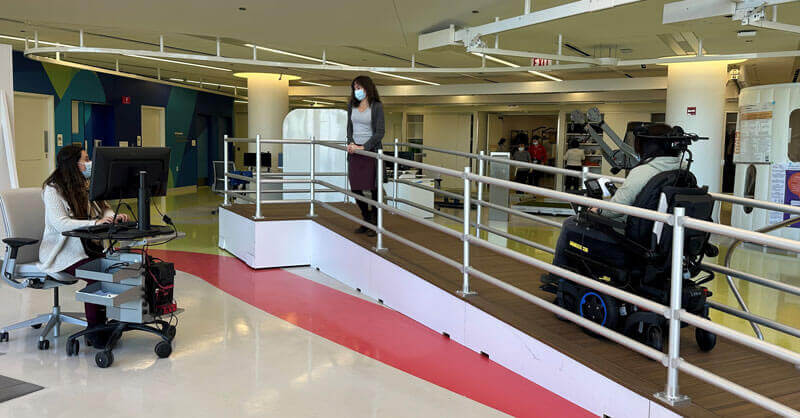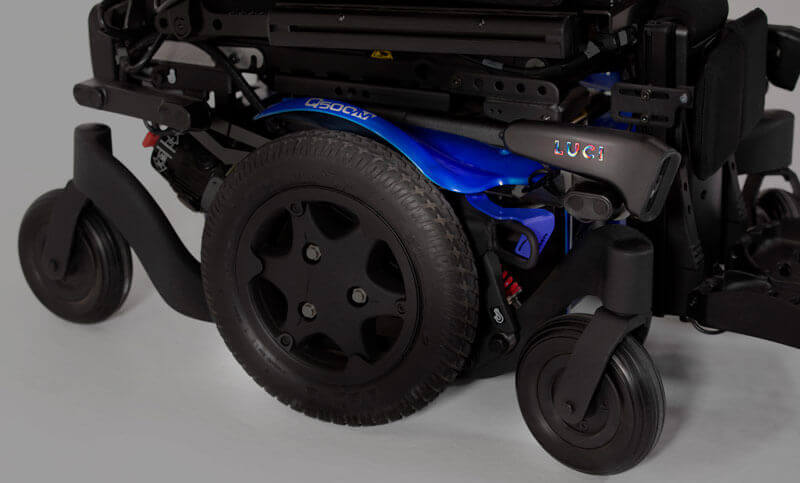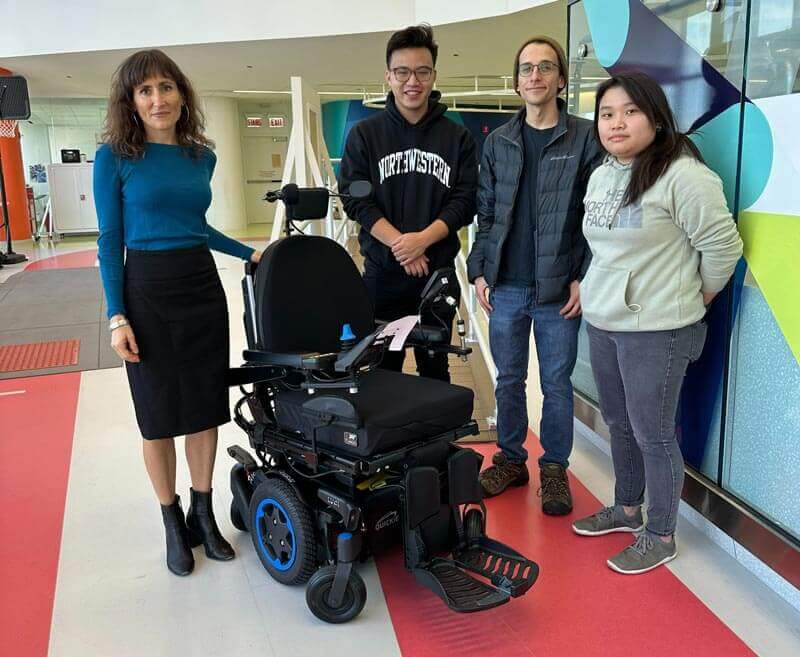Sunrise Medical, LUCI, Northwestern University, and Shirley Ryan AbilityLab have collaborated to enhance research focused on semi-autonomous robotic wheelchair controls. Dr. Brenna Argall is an Associate Professor of rehabilitation robotics at Northwestern University and is affiliated with the Departments of Computer Science, Mechanical Engineering, and Physical Medicine and Rehabilitation. She is also a Faculty Research Scientist at the Shirley Ryan AbilityLab (SRALab). She is the founder and director of argallab, which is the assistive and rehabilitation robotics laboratory housed at SRALab.
Dr. Argall's research combines artificial intelligence, rehabilitation robotics, and machine learning. One of the argallab's projects is to research and develop a semi-autonomous robotic wheelchair. The goal is to have robotic autonomy work in collaboration with the person in the wheelchair. For the last 10 years, Dr. Argall's team has had to cobble together various sensors, computer interfaces, and circuit boards to be able to read the information needed for the autonomy algorithms.
 Dr. Brenna Argall, Mahdieh Nejati Javeremi, and Larisa Loke navigating a ramp through semi-autonomous input
Dr. Brenna Argall, Mahdieh Nejati Javeremi, and Larisa Loke navigating a ramp through semi-autonomous input
Before LUCI, there was no sensor-based safety system commercially available. LUCI's Smart Technology takes care of all the sensing in the external world. It is stable, reliable, and redundant -- meaning that multiple sensors are able to sense the same object in the environment in case one fails or is unable to detect a certain type of surface. For instance, one sensor might detect glass, whereas another may sense other barriers. LUCI provides sensor streaming data about the environment around the wheelchair. LUCI has been developing a sandbox to make this information available to researchers like Dr. Argall's team. The current LUCI system provides subtractive control, which stops and steers the wheelchair when it senses danger. This collaboration between the argallab, Sunrise Medical, and LUCI is helping to expand the LUCI system to have active assistance that can do things like plan a path around an obstacle.

Dr. Argall states that "this is the best collaboration we have had with the industry." "We are pleased with the performance of the Sunrise Medical QUICKIE Q500 M mid-wheel drive wheelchair coupled with the LUCI sensor system." Mahdieh Nejati Javaremi, one of the researchers involved for many years on the project, noted the intuitive ease of driving the QUICKIE Q500 M.
 Dr. Brenna Argall and the student researchers involved in this project: Larisa Loke, a Ph.D. student; Andrew Thompson, a Ph.D. student; and Joel Goh, a Research Assistant.
Dr. Brenna Argall and the student researchers involved in this project: Larisa Loke, a Ph.D. student; Andrew Thompson, a Ph.D. student; and Joel Goh, a Research Assistant.
With over 40 years of clinical practice as an OT, Jessica Presperin Pedersen has worked in all sectors of the wheelchair and seating industry as a master clinician, supplier, manufacturing consultant, design representative, and educator. Dr. Presperin Pedersen was a pioneer in the development of the profession of wheelchairs and seating in the 1980s and has spent the last two decades contributing to the research world to demonstrate evidence for knowledge translation in the clinic, advocacy, and product development. She is a RESNA and AOTA Fellow, serves on the Clinician Task Force, the Seating and Wheeled Mobility Committee for AOTA, and has shared her experiences internationally through publications and presentations.